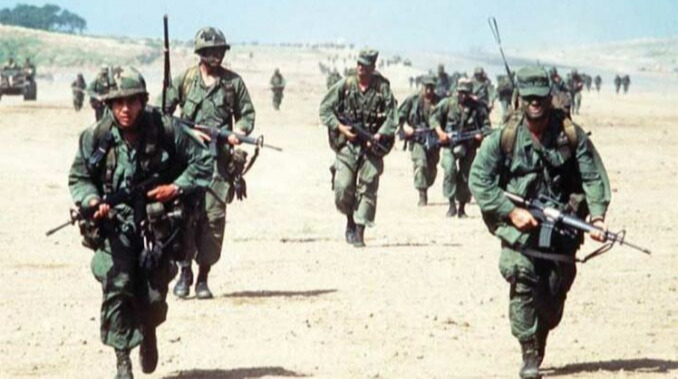
One of the many debts the United States owes to our region is the bloody invasion of Grenada, a small Caribbean island nation against which disproportionate force was applied under the pretext, once again, of restoring democracy, peace and security.
By Guillermo Alvarado
One of the many debts the United States owes to our region is the bloody invasion of Grenada, a small Caribbean island nation against which disproportionate force was applied under the pretext, once again, of restoring democracy, peace and security.
That island had been ruled with an iron fist by Eric Gairy since 1950, who remained in power for almost three decades, established a corrupt regime, was a great friend of Augusto Pinochet and received unconditional support from Washington, where his methods were never questioned.
In the opinion of the White House, the individual, socioeconomic and political guarantees of citizens were never at risk in Gairy's Grenada.
Things changed when on March 13, 1979 the New Jewel Movement, led by Maurice Bishop, put an end to the dictatorship and promoted the People's Revolution, which reestablished rights for the entire population.
The United States immediately applied sanctions against the new government, among them freezing credits and investments to damage the economy and create hardship and discontent among the people, a very repeated imperial formula.
From the North an internal opposition was created and lies were spread to discredit the nascent Revolution.
One of them was that the runway of the new airport, which by the way was being built with Cuban solidarity support, exceeded the size of a civilian facility and would be used as a Soviet-Cuban air base.
The most artful part of the U.S. conduct was that, when they succeeded in getting several military men to join their plans, who deposed and assassinated Bishop, they used the chaos they themselves had caused as an excuse to carry out the invasion.
Photo: Greelane.com
It was Washington that led other Caribbean states to "request" the armed intervention, which began on October 22, 1983, although the bulk of the attack occurred three days later, and lasted until November 4.
Against a small country of 214 square kilometers, with a population then of 110,000 people, where there was a group of Cuban collaborators, most of them civilians, and some Soviet advisors, a huge military force was used.
Five ships of amphibious squadron number four were mobilized and six other ships took up positions off the coast of Grenada.
Involved were 7,300 Marines, members of the 82nd Airborne Division, numerous special troops and an undetermined number from the 22nd Amphibious Unit.
Combat aircraft bombed civilian targets and the infamous Blackhawk helicopter made its debut there.
It was a shameful punitive operation orchestrated to maintain hegemony in the Caribbean and U.S.-style democracy, the one Biden will be talking about at the virtual summit next December.

